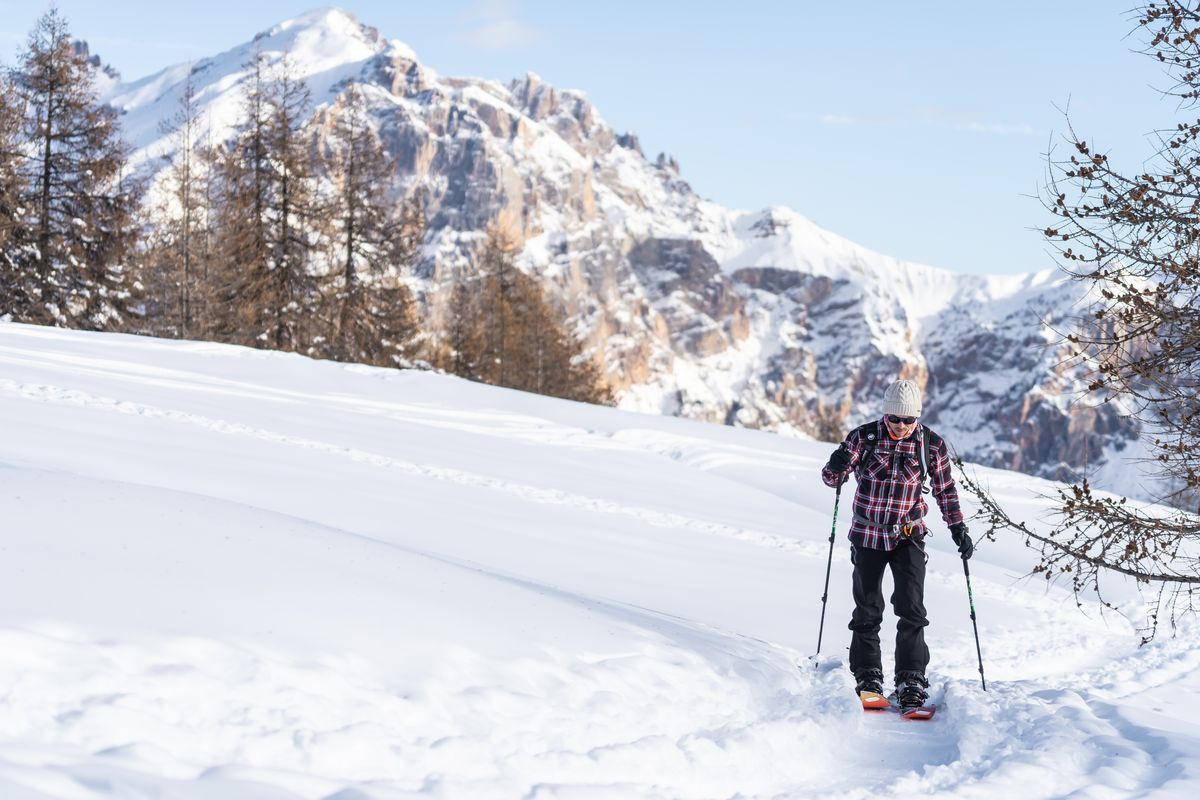
Route No.1 : Pré Rouge
Fairly difficult
Descent trail color:
Blue/Red
Corresponding ascent rating:
Moderately Difficult Alpinism
Description
Route: 5 km from station 1400 - 760m ascent
Ascend to the edge of the resort and treat yourself to a beautiful panorama of the Écrins National Park and the Durance Valley.
Marking: Purple flag markers "ski de randonnée"
Description:
The route starts to the left of the Prés chairlift, at the 1400 station, at the foot of the Puy Saint Vincent ski area.
You will gradually ascend through larch forests and open areas of the resort until you reach the "Crêtes" area, on the southern boundary of the ski area, at an altitude of 2200 meters.
The descent can be done via the red pistes to the green pistes.
- Towns crossed : L'Argentière-la-Bessée and Puy-Saint-Vincent
Sensitive areas
Golden eagle
- Impacted practices:
- Aerial, , Vertical
- Sensitivity periods:
- JanFebMarAprMayJunJulAug
- Contact:
- Parc National des Écrins
Julien Charron
julien.charron@ecrins-parcnational.fr
Golden eagle
- Impacted practices:
- Aerial, , Vertical
- Sensitivity periods:
- JanFebMarAprMayJunJulAug
- Contact:
- Parc National des Écrins
Julien Charron
julien.charron@ecrins-parcnational.fr
Recommandations
→ You must bring your own safety equipment and know how to use it: avalanche transceiver, shovel, probe, first aid kit.
→ Night-time activities on Nordic areas are prohibited. It must be supervised by a professional and must be authorized by the slopes service.
→ Several itineraries are shared with cross-country skiers, snowshoe hikers/pedestrians, sled dogs and traileurs. Please be careful.
→ It is forbidden to ascend along the ski runs unless the markings tell you to do so. In this case, you do not have priority when crossing them.
→ Respect signage: dangers, prohibitions, direction of slopes, among other things.
→ Don't overestimate your abilities!
→ Take your garbage with you!
→ When ascending and descending off-piste, you may come across triangle-shaped fenced areas: these are areas set aside for the wintering areas of the black grouse (Tétra lyre). Respect these zones and go around them.
→ Don't hesitate to take along a topo-guide so that you have all the information you need on ski touring routes at hand.
Mountain Rescue : dial 112
13 points of interest
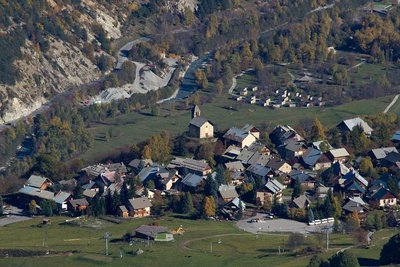
Vue sur Puy Saint Vincent - Christophe Albert - Parc national des Écrins  History
HistoryThe Sentier du Facteur - the postman's path
In former times, the postman would take this path every day: He would set out from Vallouise, deliver letters in Puy-Saint-Vincent and drop back down to Vallouise, stopping at the hamlets of Parcher on the way. In the winter, when the snow was too deep, the Traversouires (the inhabitants of Puy-Saint-Vincent) donned their snowshoes and wielded their shovels to clear the postman's path down to Vallouise.

Un frêne élevé - Marie-Geneviève Nicolas - Parc national des Écrins  Flora
FloraThe ash tree
This is one of the most common trees, provided the ground is relatively cool. It is characterised by its pinnate leaves, that is to say, made up of several segments, and in winter is can be recognised by its large black leaf buds. The ash was extremely important in times past: its foliage was used to feed cattle and its hard, flexible wood was used to make a variety of objects such as tool handles.
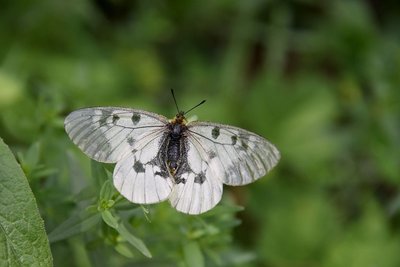
Le semi-apollon - Mireille Coulon - Parc national des Écrins  Fauna
FaunaThe clouded Apollo
This butterfly with hyaline (glass-like) translucent white wings, marked with two black spots, flutters around the clearing or the edges of the forest, where the host plants of its caterpillars grow: the corydalis. Although abundant locally, it is nevertheless a species in sharp decline and is protected.
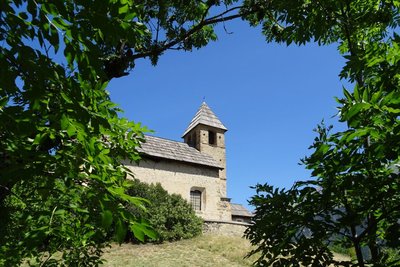
La chapelle Sainte Marie Madeleine - Office de tourisme Pays des Écrins  History
HistoryThe church of Sainte-Marie-Madeleine-des-Prés and its two sun dials
The charming little church of Sainte-Marie-Madeleine-des-Prés, which dates from the sixteenth century, stands in the hamlet of Les Prés. It is surrounded by a wall and a cemetery. On the walls of the church, two sun dials can be seen, both engraved and painted on plaster in 1718. The first is above the door, telling the time in the afternoon, bearing the saying « for a moment of delights, an eternity of torments » which alludes to the life of Saint Mary Magdalene, the well-known sinner who is venerated as a model of penitence. The second, telling the time in the morning, bears the Latin phrase Ars longa, vita brevis which translates as« learning is long, life is short ».
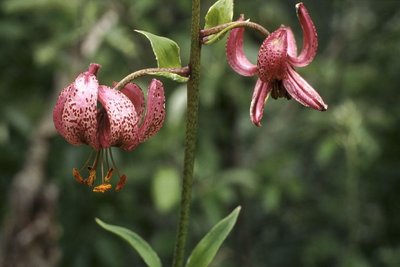
Le lis martagon - Marie-Geneviève Nicolas - Parc national des Écrins  Flora
FloraThe martagon lily
In cooler spots, the path is edged by large plants such as the wood cranesbill, which has purple flowers, and the martagon lily. This superb plant has large hanging flowers with curved-back petals, which are pink speckled with purple and exposed orangey stamens. Its leaves are elongated and whorled. It grows in meadows and cool woods. Although common here, it is rare in many French regions. In fact, picking it is prohibited or regulated.
Chalet - Jan Novak  Panorama
PanoramaTournoux
The Tournoux plateau is a small paradise with its cool meadows, its occasional renovated chalets made from stone and larch wood and its view over the Tête d'Aval, an imposing limestone peak forming part of the Montbrison massif. Whether on a mountain bike, on foot or on cross-country skis in the winter, this spot is always an invitation to stop for a break!

Hameau des Prés - Marie-Geneviève Nicolas - Parc national des Écrins  History
HistoryLes Prés, hamlet of Puy-Saint-Vincent
Le Prés is one of the main hamlets of Puy-Saint-Vincent. Like Le Puy and Les Alberts, it stands on a flat plateau which is a glacial escarpment left by the now-retreated Gyronde glacier. Like Prey d'Aval, Prey du Milieu and Prey d'Amant, its name is a reminder that prior to the development of the ski resort, the land here used to be shared by meadows and crops.
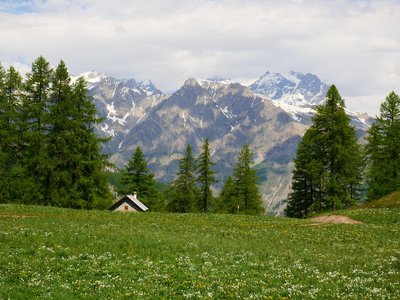
Le Laus - Marie-Geneviève Nicolas - Parc national des Écrins  Vernacular heritage
Vernacular heritageLe Laus
A number of old alpine pasture chalets or hamlets, often renovated, are dotted across the Puy-Saint-Vincent resort. These are the Chalets du Laus. Le Laus is a place name designating a lake. In fact, just after the chalets, although not a lake, there is a flat, marshy area which is no doubt a small filled-in lake. So no point in bringing your pedalo!
La Voile de Puy Saint Vincent 1600 - Jan Novak  Architecture
ArchitectureThe architecture of La Voile in Puy-Saint-Vincent 1600
The construction of this large building complex, the highest part of which is known as « La Voile »(the sail), was started in 1973 by a team of investors responsible for developing the 1600 ski resort. Designed by the Grenoble-based architect, Michel Ludmer of the Les 3A firm of architects, this tiered construction hugs the slopes with its silhouette, its soaring design structured around a mast, like the sail of a yacht sailing in a sea of snow. La Voile was inspired by iconic buildings in other tourist resorts, like the « Paquebot des Neiges » (the snow liner) in La Plagne and the « La Grande Pyramide » (great pyramid) in La Grande-Motte. Although still misunderstood, this architecture which presents numerous advantages (like restricting the use of space) might well merit a « Twentieth Century Heritage » label.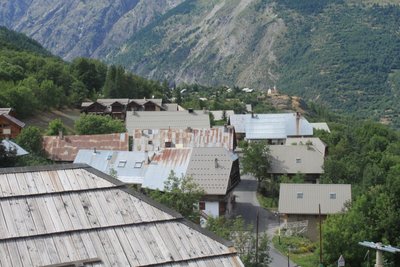
Maison à arcades - Office de tourisme du Pays des Écrins  History
HistoryThe house with arcades
In the municipality of Puy-Saint-Vincent, there are a number of houses typical of the rural architecture of Vallouise, in particular houses with arcades, in the hamlets of Les Alberts and Les Prés. This type of construction can be recognised by the presence of large arches made from stone from the Montbrison massif and supporting walking galleries. Introduced in the eighteenth century by Piedmontese master masons who settled in the valley, this style with arcaded galleries has become characteristic of the architecture of the Vallouise valley. Elegant and monumental, they replaced modest wooden balconies. They facilitated mobility from one level of the house to the other (the houses did not have interior stairs), and at the same time signalled the wealth of the owner.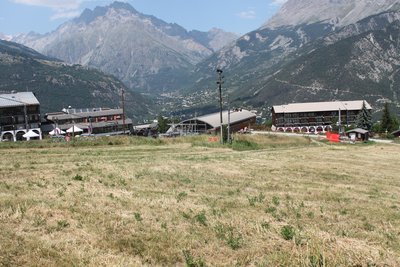
L'histoire de la station de Puy Saint Vincent - Office de tourisme du Pays des Écrins  History
HistoryThe history of the resort of Puy-Saint-Vincent
Puy-Saint-Vincent is the benchmark resort in the Vallouise. Located on the north-facing side of the valley, it is constructed on three levels, each corresponding to a different period of construction: 1400, developed in the late 1970s, 1600, developed from 1973 onwards and 1800, developed from 2005 onwards. Each level is served by a chairlift to reach the skiing area. It now has 35 pistes covering 75.4 kilometres.
Semi-apollon - Gourreau Jean-Marie - Parc national des Écrins  Fauna
FaunaThe clouded Apollo
White, almost translucent in places, with just a few black spots, this butterfly is a cousin of the better-known mountain Apollo. It lives in clearings in open woods where the plant on which the female lays her eggs grows, and on which its caterpillars feed: the corydalis. It is a mountain butterfly.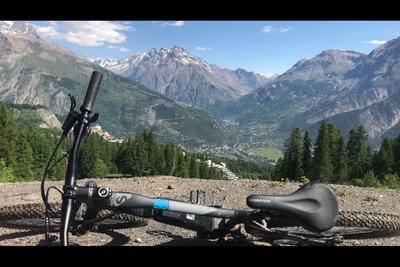
Lecture de paysage - Office de tourisme du Pays des Écrins  Panorama
PanoramaReading the landscape
The Vallouise valley is a tributary valley on the right-hand bank of the Durance. It is made up of three municipalities: Vallouise-Pelvoux, Les Vigneaux and, looking down from the heights, Puy-Saint-Vincent. This 25 km-long valley is dominated by numerous peaks, ranging in altitude from 980 metres, at the confluence of the Durance, to the peak of the Barre des Écrins at 4,102 metres (the highest point in the Les Écrins massif) and covers 18,541 hectares. Lying at the centre of the crystalline massif, the Vallouise valley is the gateway to the Parc National des Écrins and boasts exceptional and varied landscapes and a diverse wealth of fauna and flora.
